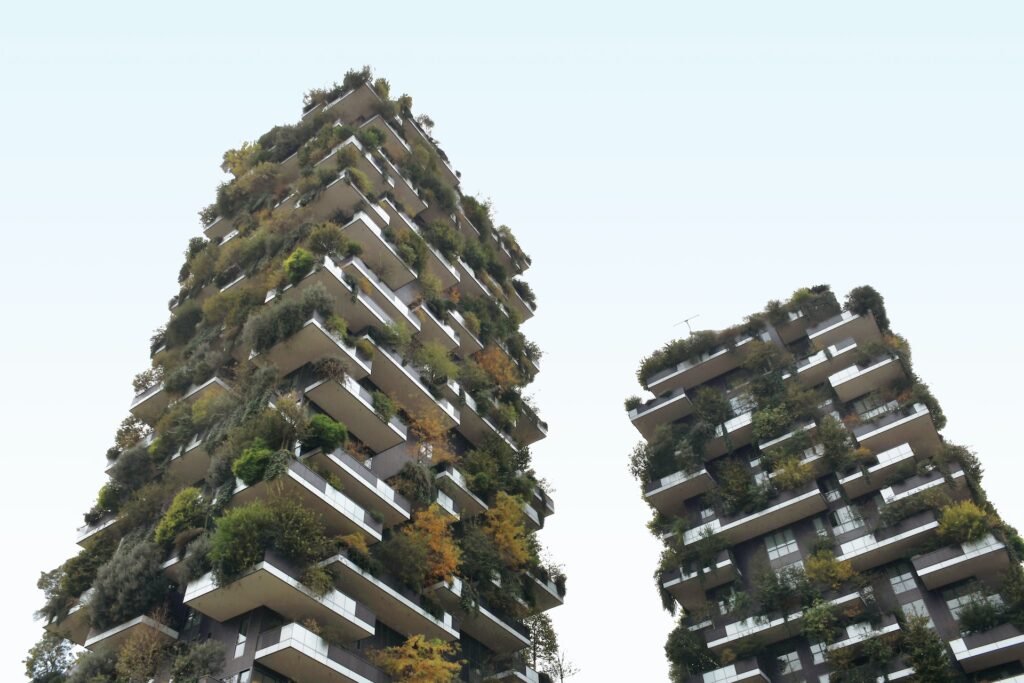
Antonella Radicchi
Architect and Urbanist, PhD
URBAN DESIGN & SUSTAINABILITY
<Cover and above image respectively by Gabor Molnar and Daryan Shamkhali via unsplash>
URBAN DESIGN FOR SUSTAINABLE BUILT ENVIRONMENT
Within the context of Agenda 2030, the built environment stands at the crossroad of the Sustainable Development Goals (SDGs), as it is a determinant for making green, energy-efficient and zero-pollution buildings and neighbourhoods (SDG3, SDG11, SDG15); boosting the circular economy (SDG8); lowering GHG emissions and contributing to climate change mitigation and adaptation (SDG3, SDG9); protecting biodiversity (SDG15); and creating strong and global partnerships (SDG17).
The built environment is also key to the health and well-being of people, and its design is instrumental in achieving high-quality urban environments in response to societal, environmental and economic sustainability challenges like climate change, energy consumption, nature preservation and pollution. However, a scrutiny of the literature in sustainability and urban design studies shows that mainstream ‘sustainable’ approaches to the design of the built environment are mainly driven by a digital and technocratic approach applied to the building and neighbourhood scale, which tends to sideline the public realm and the social and natural life which unfolds there. Furthermore, mainstream ‘sustainable’ approaches are underpinned by theoretical and methodological frameworks with a bias towards cognitivism, thus overlooking the complex and interrelated cognitive, emotional, affective and corporal conditions of human beings.
To tackle these challenges, sustainability scholars have developed novel sustainability paradigms, such as the Regenerative Sustainability (RS) and the Sensory Sustainability Science (SSS) frameworks. The RS paradigm, for instance, aims to manifest thriving complex adaptive systems in a fully integrated individual-to-global system and calls for humans to live in conscious alignment with the living system principles of wholeness, change and relationships, as nature does. Another novel approach is represented by the one underpinning the so-called SSS paradigm, which calls for incorporating recent advances in social science, sensory studies and neo-phenomenology related to theories about corporeality, materiality, atmosphere and resonance in sustainability science.
However, how are these sustainability paradigms addressed in urban design by scholars and practitioners? What are the implications for theoretical and applied research, practice and developments in sustainability and urban design?
This Special Issue, “Urban Design for Sustainable Built Environment”, scrutinises these open questions through a collection of nine research articles which reflect a paradigm shift towards sustainable urban design practices and studies which privilege people and sustainable development in respect of the planet.
Specifically, these articles address three macro-themes: (a) regenerative streets and green public spaces; (b) emotions, cognition and orientation; and (c) methods and technology, as outlined in the following sections.
Continue reading our Editorial and explore the Special Issue.
YEAR/S
2021-2023
CO-EDITORS
- Prof Dr J. Vida Manzano, University of Granada, Spain
- Dr Antonella Radicchi, University of Siena, Italy
- Dr J. Xiao, Birmingham CIty University, UK
ACKNOWLEDGMENTS
We would like to thank all authors for their contributions to this Special Issue and for their high-quality work and effort in the reviewing process of the manuscripts. We would like also to acknowledge the pioneering research work on the Sensory Sustainability Science by Harald Heinrichs which has been inspirational to the conception of this Special Issue.
